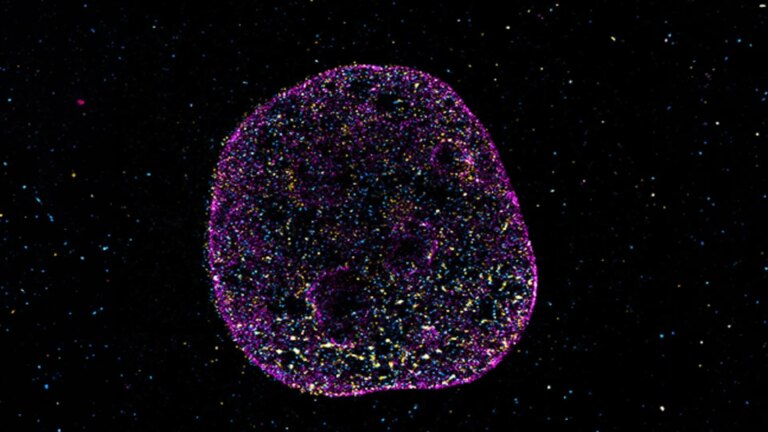A new language has been found inside us, one that’s not written in DNA’s letters but carved into its very shape.
For decades, scientists believed the essence of life was written solely in four chemical bases: A, C, T, and G. Together, they make up the genetic code, the biological “text” that defines who we are.
But new research from Northwestern University suggests there’s more to the story — a second language built on geometry rather than chemistry.
Led by biomedical engineer Vadim Backman, the study reveals that DNA’s 3D physical structure holds a “geometric code” — a system that allows cells to compute, remember and adapt.
“Rather than a predetermined script based on fixed genetic instruction sets, we humans are living, breathing computational systems that have been evolving in complexity and power for millions of years,” Backman said.
Backman, a professor at Northwestern’s McCormick School of Engineering, describes this discovery as uncovering the “blueprint” that lets genomes behave like living microprocessors.
His team, including Igal Szleifer, Luay Almassalha, and Kyle MacQuarrie, decoded how DNA’s shape, not just its sequence, influences gene behavior.
Geometry writes memory
Inside each cell, DNA folds into nanoscale “packing domains” that create physical memory nodes, units that can store and stabilize genetic activity.
“We are learning to read and write the language of cellular memories,” Szleifer said. “These ‘memory nodes’ are living physical objects resembling microprocessors.”
These structures aren’t random. Over millions of years, nature appears to have optimized the genome’s shape to make it more efficient at storing and accessing information.
This geometric architecture may even explain how complex organisms evolved so rapidly — not by inventing new genes, but by rearranging the ways existing ones are used.
Backman believes this geometric language could be the bridge between biology and computation. “Looking across time,” he said, “life progressed rapidly from single-celled organisms into bodies with brains. And when we look closely, the rules of AI mirror the computational rules underlying genome geometry.”
Stories cells can tell
The discovery reshapes how scientists think about evolution and disease. As cells age, their geometric “language” may lose accuracy, leading to conditions like cancer or neurodegeneration.
“Instead of a puzzle of genetic words, the geometric code lets cells build elaborate tissues, such as brains or skin,” Almassalha said. “But with age, this language loses its fidelity.”
Understanding this hidden code could open new ways to repair or rewrite cellular memories.
“The next step is to fully learn the engineering principles of the geometric code so we can repair dysregulated cell memories or create entirely new ones,” Backman said.
The study, titled “Geometrically Encoded Positioning of Introns, Intergenic Segments, and Exons in the Human Genome,” was published on October 27 in the journal Advanced Science.
[ad_1]
Images are for reference only.Images and contents gathered automatic from google or 3rd party sources.All rights on the images and contents are with their legal original owners.
[ad_2]

